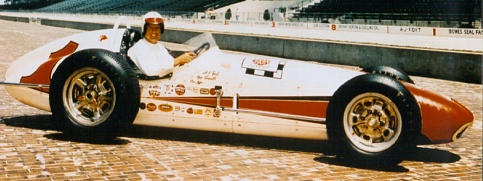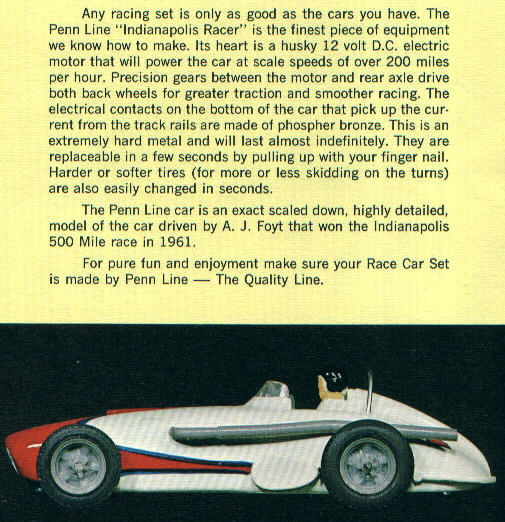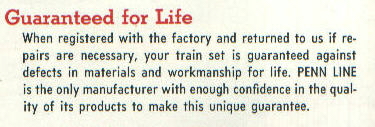 |
Actual Photo of A.J. Foyt in 1961 |
A Short History of Penn Line |
By Frank Dill |
The Final Year |
A. J. Foyt Slot
Cars |
Penn Line's final product introduction was in 1962.
It was not model train related at all. As I said earlier, most model
train companies had declining sales during this period. A number
of them tried to manufacture slot car sets. There were certainly similarities
that made the switch natural. There were also similar problems.
For instance there were various scales competing in the new market.
Briefly consideration was given to making cars in the 1:87 that
HO used. This would have allowed a railroader to place a speedway on
the same layout. It was quickly realized that the technology would
not support the small motors needed. Still Penn Line had always liked
the fact that if a layout was small enough it could be kept up permanently.
Consequently for the slot cars Penn Line chose a scale that was
smaller than most other companies used. A single loop or figure 8 over
and under track could easily be set up on a 4'x8' piece of plywood. |
Penn Line went bankrupt and closed in 1963. Assets exceeded liabilities. There was nothing left for the stockholders. Some of the assets related to the steam locomotives were sold to Bowser in Montoursville, PA To this day Bowser markets kits derived from the Penn Line designs and has parts that are compatible with the Penn Line locomotives. |
Penn Line's founders always thought of themselves as hobbyists.
They liked the things that hobbyists liked. They like to be able to
repair their products. They made fairly priced replacement parts
available. And they stood behind their products. If one did not work
because of some manufacturing flaw, they made good. In the 1958
catalog the company made explicate their guarantee. "Your train set
is guaranteed against defects in materials and workmanship for life.
PENN LINE is the only manufacturer with enough confidence in the
quality of its products to make this unique guarantee." Just pull
out any guarantee for any other product that you have ever purchased.
I can "guarantee" that you have probably never seen a guarantee
more honest than this. Penn Line fully and honestly intended to honor
this guarantee. And they intended it to apply to all their products.
It was never a problem before the racing cars. The locomotives rarely
had a problem with defects or workmanship. Sometimes one would be dropped
and need repair, but the user knew the damage was not caused by a defect. |
 |
Actual Photo of A.J. Foyt in 1961 |
 |
From Penn Line's 1962 Promotional Pamphlet |
 |